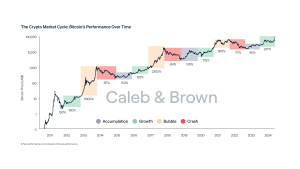Understanding FHA Mortgage Insurance Premiums
Unlocking the secrets of FHA mortgage insurance premiums! Learn how much it really costs and make smarter home-buying decisions. Navigate the process with confidence and avoid costly surprises. Get your FHA mortgage questions answered!
Securing a mortgage can be a daunting process‚ filled with jargon and complex financial calculations. One crucial aspect often misunderstood is FHA mortgage insurance. This insurance protects the lender in case the borrower defaults on their loan. Understanding the cost of this insurance is vital for budgeting and making informed decisions about your home purchase;
FHA mortgage insurance‚ unlike private mortgage insurance (PMI)‚ is required for all FHA loans. It’s a crucial component of the FHA loan program‚ designed to mitigate risk for lenders. The cost of this insurance is broken down into two main components: the upfront premium and the annual premium.
The Upfront Mortgage Insurance Premium (UFMIP)
The UFMIP is a one-time payment‚ typically paid at closing. This fee is calculated as a percentage of the loan amount. The percentage varies depending on the loan-to-value ratio (LTV) and the type of loan. For example‚ a loan with an LTV of 90% might have a higher UFMIP than a loan with an LTV of 80%. This upfront cost is often financed into the loan itself‚ meaning it’s added to the overall loan amount‚ increasing the monthly payments slightly.
It’s important to note that the UFMIP can be rolled into the loan amount‚ thus avoiding a large upfront payment. However‚ rolling it in increases your overall loan amount and‚ consequently‚ the total interest you’ll pay over the loan’s life. Thorough budgeting is key to understanding the long-term financial implications of this choice.
The Annual Mortgage Insurance Premium (MIP)
The annual MIP is a recurring cost that’s paid monthly along with your mortgage payment. It’s expressed as a percentage of the loan amount. Unlike PMI‚ which typically terminates once you reach a certain level of equity in your home‚ FHA MIP can persist for the entire life of the loan‚ especially with loans above 90% LTV. It significantly impacts your monthly housing expense.
The exact annual MIP percentage depends on several factors‚ including the loan term‚ the type of loan‚ and the down payment. Loans with lower down payments generally have higher annual MIPs. It is crucial to carefully review your loan documents and understand the complete financial picture before committing to the loan.
Factors Affecting FHA Mortgage Insurance Costs
Several factors influence the precise cost of FHA mortgage insurance. Understanding these elements will provide a more accurate estimate of your overall expenses.
- Loan Amount: The larger your loan‚ the higher your insurance premiums will be. This is a direct correlation; a larger loan means a higher level of risk for the lender.
- Loan-to-Value Ratio (LTV): This is the ratio of your loan amount to the appraised value of the property. A higher LTV (meaning a smaller down payment) results in a higher insurance cost because it signifies greater risk for the lender.
- Credit Score: Your credit score plays a crucial role in determining the interest rate and‚ consequently‚ the total cost of the loan‚ including mortgage insurance. A higher credit score often translates to lower premiums.
- Loan Term: Longer loan terms generally result in higher overall insurance costs‚ as you’ll be paying the annual MIP for a longer period.
- Property Type: The type of property you are financing can also affect the premium. For instance‚ a multi-family dwelling may have different insurance requirements compared to a single-family home.
How to Calculate Your FHA Mortgage Insurance Costs
While online calculators can provide estimates‚ determining the precise cost requires a detailed analysis of your specific circumstances. Consult a mortgage lender to get an accurate calculation. They will consider your personal financial profile‚ the property details‚ and your chosen loan terms to determine the exact premiums.
This calculation involves considering both the upfront premium and the annual premium. Ensure you factor these into your overall budget to avoid surprises during the home buying process. Lenders will usually provide a comprehensive loan estimate that clearly outlines all costs associated with the loan‚ including mortgage insurance.
Comparing FHA Mortgage Insurance to PMI
Many first-time homebuyers compare FHA mortgage insurance to private mortgage insurance (PMI). While both protect lenders‚ there are key differences. PMI is typically required for conventional loans when the down payment is less than 20%; Once you’ve built enough equity (usually 20% of the home’s value)‚ PMI is typically removed. However‚ as mentioned‚ FHA MIP can persist for the entire loan term depending on the LTV and loan specifics.
The cost of PMI can vary greatly depending on the lender and your financial profile. In some instances‚ PMI might be cheaper than FHA MIP‚ but in others‚ it might be more expensive. A thorough comparison is essential before making a decision.
Finding the Best FHA Loan
Shopping for the best FHA loan involves comparing offers from multiple lenders; Don’t settle for the first offer you receive. Consider factors beyond just the interest rate. Compare the upfront and annual MIP costs‚ along with closing costs and other associated fees. This diligent comparison will allow you to choose a loan that best aligns with your financial goals and minimizes long-term costs.
Take advantage of available resources to educate yourself on the FHA loan process. Government websites and reputable financial institutions offer valuable information and tools to assist you in making informed decisions.
Understanding the Long-Term Costs of FHA Mortgage Insurance
It’s crucial to understand that FHA mortgage insurance is a long-term commitment. While it offers benefits such as lower down payment requirements‚ the ongoing costs should be carefully considered. The monthly payments will be higher due to the inclusion of the MIP. This added expense should be factored into your monthly budget and long-term financial planning.
Consider the cumulative cost of the MIP over the life of the loan. This will give you a clearer picture of the total cost of the mortgage. This careful assessment will enable you to make a sound financial decision that is appropriate for your circumstances.
Remember‚ the goal is to find a balance between the benefits of an FHA loan and the long-term financial implications of the mortgage insurance premiums. A thorough understanding of these costs is essential for responsible homeownership.
Seeking Professional Advice
Navigating the complexities of FHA mortgage insurance can be challenging. Seeking professional advice from a qualified mortgage lender or financial advisor is strongly recommended. They can provide personalized guidance based on your individual financial situation and help you make informed decisions about your home purchase.
These professionals can help you understand all aspects of FHA loans‚ including the intricacies of mortgage insurance‚ and assist you in finding the most suitable loan option for your needs. They can also help you understand the implications of rolling the upfront premium into your loan.
- Mortgage Lender: A lender can provide you with accurate cost estimates for your specific situation.
- Financial Advisor: A financial advisor can help you integrate mortgage costs into your overall financial plan.
- Real Estate Agent: A real estate agent can offer valuable insights into the local housing market and assist you in finding the right property.







